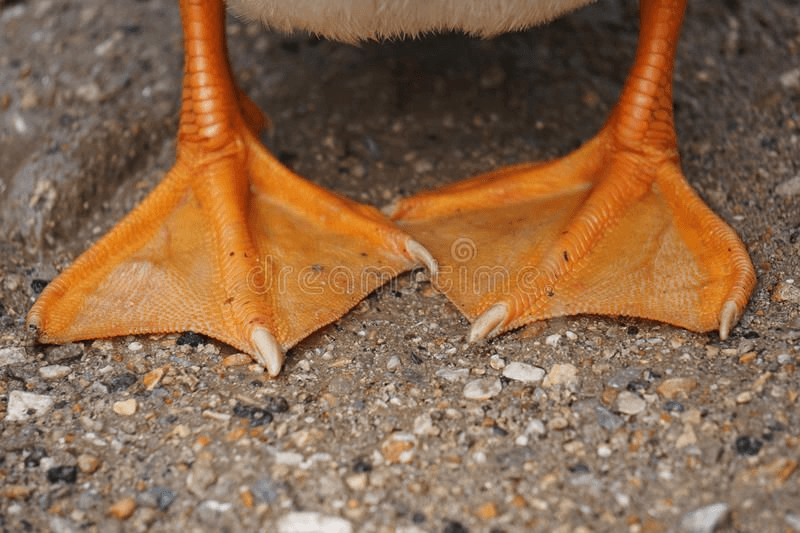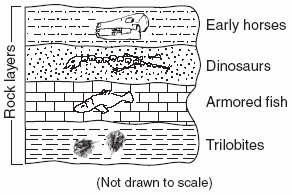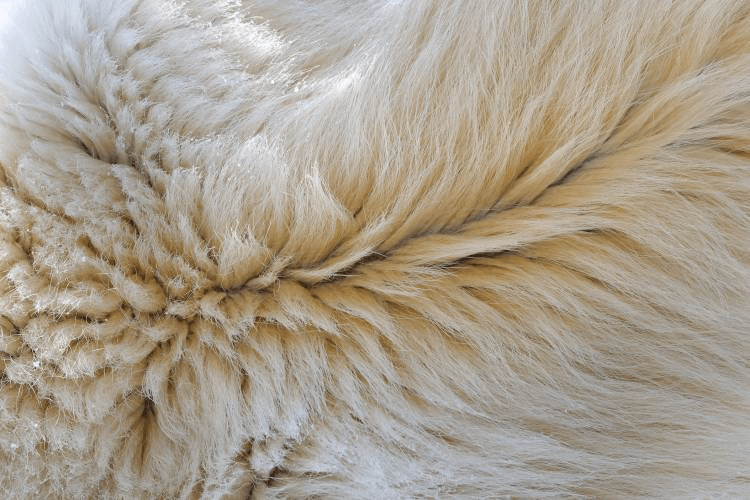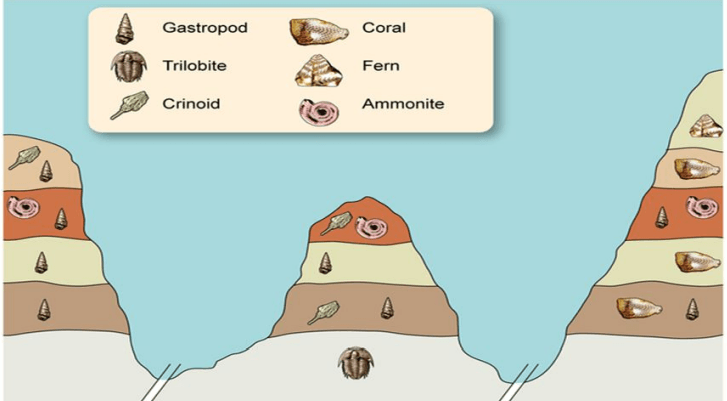A ____ is how an organism looks.
One example that a fish has is _____.
Trait
Scales, Gills, Fins, Being blue
(Or any other fish trait)
A _____ is a place where an organism lives.
Three examples are ______, _______, and ______.
Habitat
Desert, Forest, Arctic, Rain Forest, Ocean, Grassland (Or any other habitat)
An organisms traits are determined by its _____.
DNA
Most organisms ____ become fossils because _____.
Do Not
They are eaten by other animals
If we observe two fossils buried in the same layer, we would infer __________.
They are the same age
The 4 layers of the Earth are _____, _____, ______, and ______.
Crust, mantle, outer core, inner core
The most recent supercontinent, _________, was formed ______ years ago.
Pangaea
300 Million
The _____ is divided into 12 plates, which float on top of the liquid _____.
Crust
Mantle
A ______ is what an organism does.
One example for a fish is ____.
Behavior
Swimming, eating other fish, breathing oxygen, sleeping, jumping (Or any other fish behavior)
In its habitat, an organism can meet its need for _____, ______, ______, and ______.
Food
Water
Shelter
Air
A change in DNA is called a _________, and can be ______, ________, or _______.
Mutation
Helpful, Harmful, Neutral
Give two examples of soft parts of an organism, and two examples of hard parts.
Organs, Skin, Fur
Bones, Teeth, Claws
The youngest fossils are buried ______ while the oldest fossils are buried ________.
Close to the surface
Deeper down
The only layer Scientists can directly observe is the ____ because ______.
Crust
It is too hot to dig deeper
When Wegener first proposed the theory of continental drift, _____, but now, ______.
It was Rejected
It is widely accepted
The best evidence for Plate Tectonics is Sea-Floor spreading at the Mid-Atlantic Ridge.
This is a mountain range in the _____, where new rock ______, pushing apart the continents of _____ and ____.
Atlantic Ocean
Rises to the surface
Africa and South America OR Europe and North America
You can inherit your parent's _______, but not your parent's ________.
Traits
Behaviors

I predict this organism lives in __________, because its webbed feet help it ___________, to meet its need for ________.
The pond
Swim Faster to catch food; Food
Swim Faster to escape predators; Shelter
A fish in polluted water is born with brown scales.
This mutation is _________ because ___________.
Helpful
It will help the fish to camouflage.
It is hard to study ancient organisms because _______, so instead we learn about them by ______.
Time machines aren't real; they lived in prehistory; we can't observe them directly
Observing Fossils and making inferences
 I infer the youngest organisms are the _______ because _______.
I infer the youngest organisms are the _______ because _______.
Early horses
They are buried closest to the top
We can observe pieces of the mantle, called _____, when ______.
Magma
Volcanoes Erupt
Why would it be surprising to find a coral fossil in an arctic habitat?
Coral lives in warm climates, but arctic habitats are near the poles where it is very cold.
In a convection current,
Warm Rock ______ but Cool Rock ______
Warm rock rises but cool rock falls
Describe the difference between a biological parents and a care-taking parent.
Your biological parents gave birth to you, but your care-taking parents raised you.
For some people, they are the same and for others they are different.
Habitats near the ________ are the warmest because __________.
Equator
Always get direct sunlight
DNA is stored in the cell's ________ and can mutate when _______.
Nucleus
It is being copied
In mud or sand, the soft parts ______, but in ice or amber the soft parts _____.
Decompose
Are Preserved
A fossil scientists know the exact age of is called an _____ Fossil.
The best ones:
a)
b)
Index Fossil
Lived in Many Places
For a short period of time
The crust is made of _____, the mantle is made of _____, and the core is made of _____.
Solid Rock
Liquid Rock
Metal
When scientists found the same lizard fossil in Antarctica, South America, and Africa, they knew ______, so they inferred _________.
It couldn't swim that far
The continents drifted
There will always be convection currents in the mantle because ______.
The core will always be hotter than the crust
A biological parent from long ago is called an ______.
Two sets of organisms with a common one may develop different traits over time because _________.
Ancestor
They live in different habitats

I think this organism lived in _______ because it has _______ to help it ________, which meets its need for _______.
I think the habitat is near the _______, which are always cold because ______.
The Arctic
Thick Fur; Stay warm; Shelter
White Fur; Camouflage; Shelter
Poles; never get direct sunlight
During the industrial revolution, black wings were helpful for moths because ________.
Black wings were helpful for moths so _______.
It was easier for the moths to camouflage on the black trees.
The population of black moths increased.
You want to study the size and shape of a lizard's heart.
Do you want a mud fossil or an amber fossil?
An amber fossil because then the heart would be preserved
 The best index fossil would be _____ because _____.
The best index fossil would be _____ because _____.
Ammonite because it is found in every region but only one layer.
The mantle and core are similar because _____.
The mantle and core are different because _____.
They are both deeper than the crust. They are both very hot. Scientists cannot directly observe them.
The mantle is made of rock, but the core is made of metal. The core is even hotter than the mantle. We can see parts of the mantle during a volcano but we can never see parts of the core.
Give three pieces of evidence to support continental drift.
1) Same fossil found on multiple continents
2) Continent edges fit together like a jigsaw puzzle
3) Coral near the poles
4) Mammoths near the equator
1) Hot magma _____
2) The magma ____
3) Cooling magma ____
Hot magma rises to the surface
The magma pushes the plates apart
Cooling magma sinks back to the core